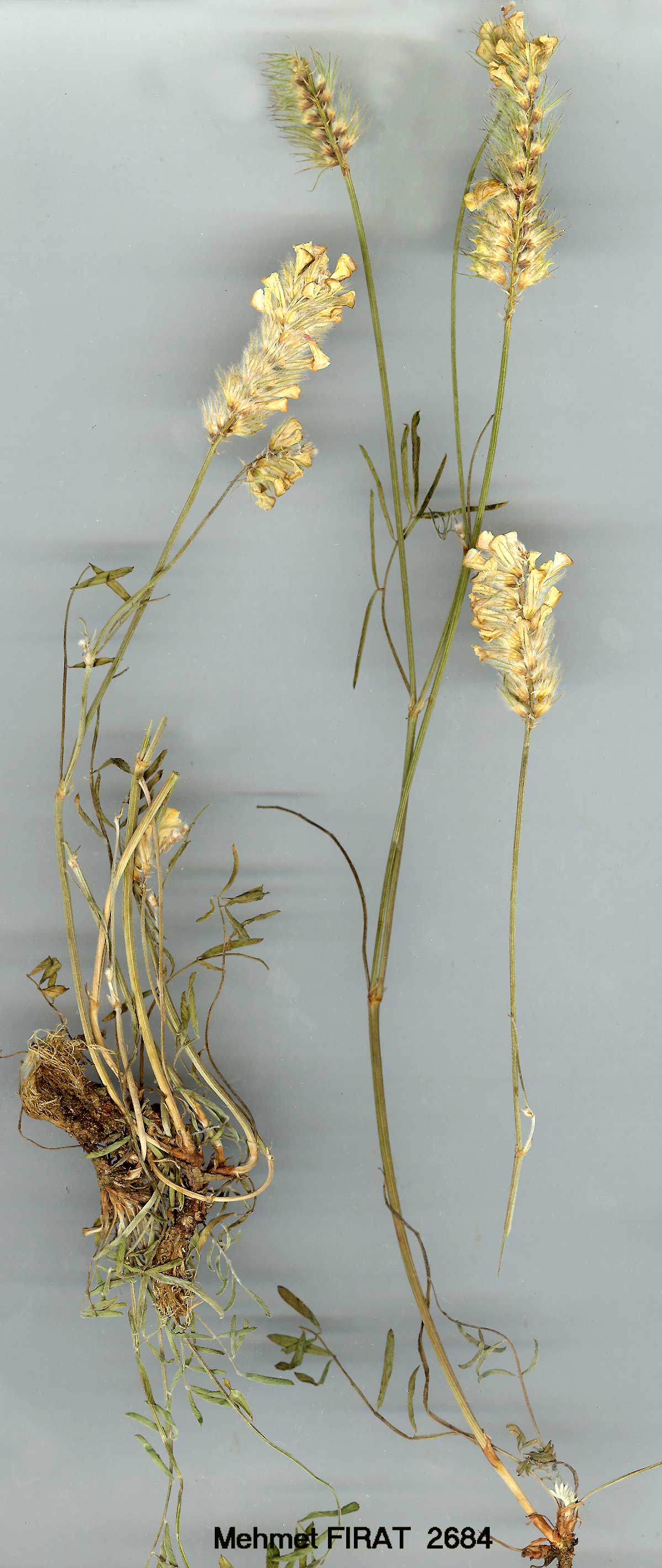| Fabaceae |
|---|

Onobrychis sulphurea BOISS. ET BAL. var. vanensis HEDGE |
 Onobrychis sulphurea BOISS. ET BAL. var. vanensis HEDGE |
Onobrychis ADANS. |
| O. sulphurea Boiss. & Bal. in Boiss., Diagn. ser. 2(6): 63 (1859). Perennial with procumbent or ascending stems, 30-60 cm. Leaves long petio- late, with 7-9 pairs of oblong-elliptic leaflets, c. 10 x 3 mm, adpressed pilose below, ± glabrous above; stipules white, connate. Peduncles longer than the leaves. Racemes many-flowered, compact, ovate-oblong or ovate, little elongating after anthesis. Calyx 7-9.5 mm with teeth 1.5-2 x length of tube, glabrous or spreading pilose. Corolla creamy white with or without darker veins; standard 8-12 mm; wings 4-6.5 mm; keel 9-11 mm. Fruit c. 8x6 mm with short adpressed or spreading hairs. Ft. 4-6. With currently available material, three varieties can be recognised. 1. Flowers ± uniformly cream-coloured; wings (4-)5.5-6.5 mm 2. Calyx glabrous or with a few hairs; fruit adpressed-pilose var. pallida 2. Calyx spreading pilose; fruit spreading-pilose var. sulphurea 1. Flowers cream with pink veins; wings 4-4.5 mm var. vanensis var. vanensis Hedge in Notes R.B.G. Edinb. 29:34 (1969). Meadows, fallow fields, steppe, 1750-2050 m. Type: [Turkey B9 Van] 5 km S of Bendimaki, Ercis to Van, 1750 m, Davis 44213 (holo. E!). S.E. Anatolia. B9 Van: Kurbaş, 6 km SE of Van, D. 44573! Bitlis: Nemrut Da., W. foot, 1800 m, D. 23583! C10 Hakkari: Nehil Çayi, 62 km from Hakkari to Yüksekova, 1750 m. D. 44928! Endemic; Ir.-Tur. element. Differing from the other varieties in the characters of the pink-veined standards, the smaller wings and the generally spreading-pilose calyx indumentum. It is also geographically distinct from them, and possibly worthy of a higher rank, but until its complete range of variation is known it is, like them, best treated as a variety. |